Who We Are
It all started in 2005...
when our family moved from a typical subdivision home to our 10 acre rural property on the outskirts of town, looking to try our hand at home-steading and self-sufficiency. What was once just a desire to get back to the land and have control over our own food source has grown over the years into practicing traditional homesteading skills and offering them to our surrounding community. Although the intention was never to 'start a farm', our gradual progression and 'learning as we go' approach has led to us launching as a farm to the rest of our community. It has been a long journey, but one that we look back on happily.
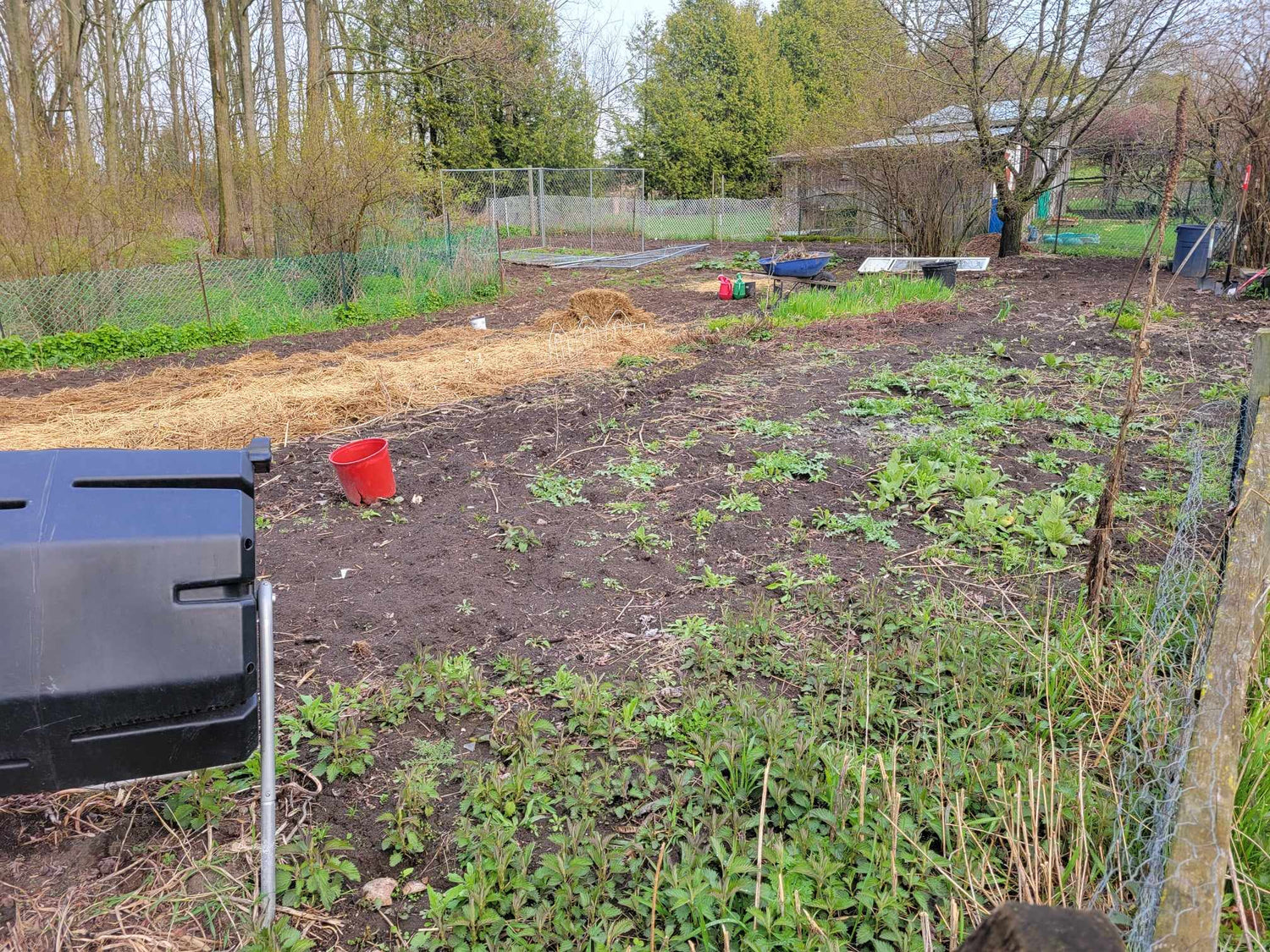
First, the Garden
Moving to a bigger piece of land meant a larger garden than our suburban backyard. Which meant beginning to grow more and more of our fruits and veggies. The original garden gradually became big enough to produce enough for canning and preserving, and allowed us to experiment and try new varietals. It taught us healthy, ecological soil amendment, and gave us a use for the composted manure we would start making in the following years.
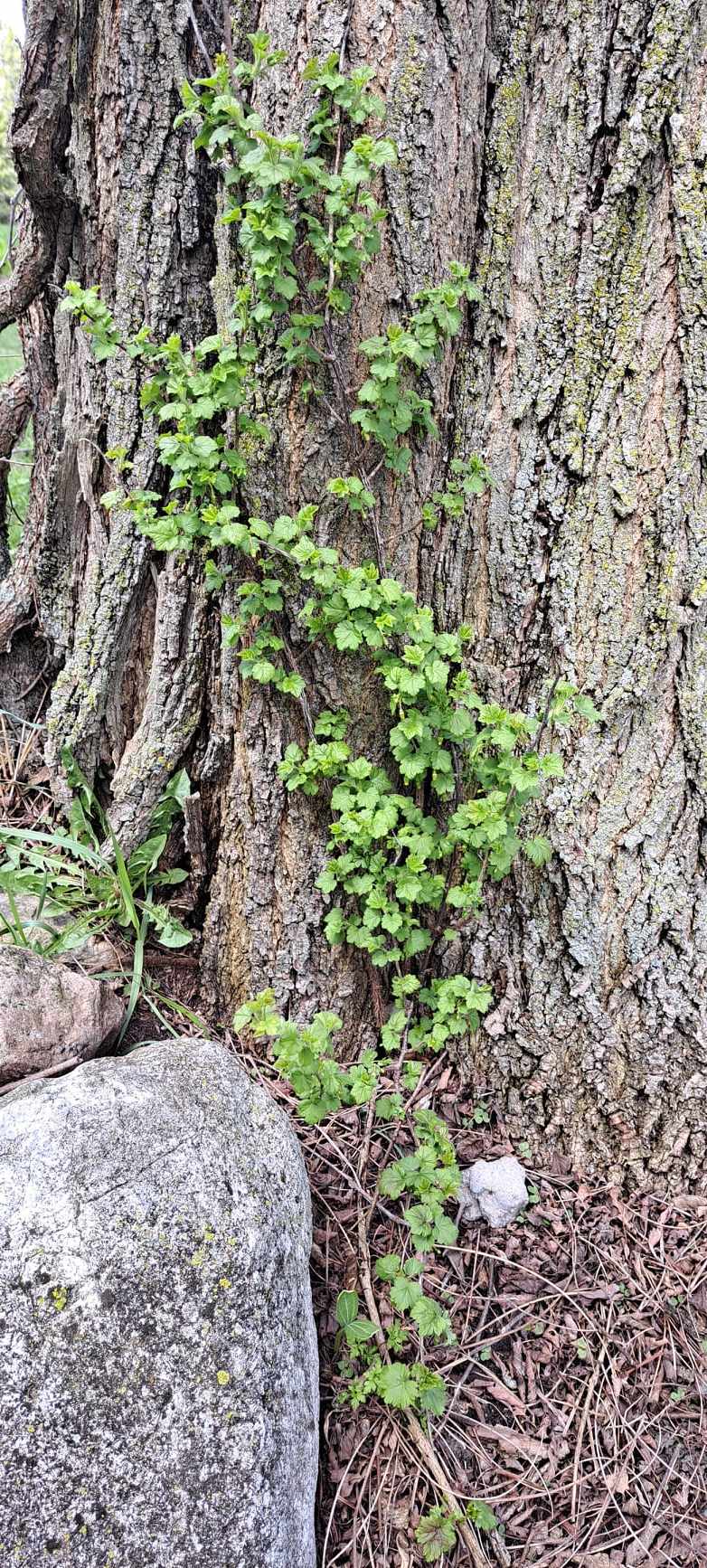
Preserving & Foraging
Once we became settled in, we began to explore the property that had become our new home. As we familiarized ourselves with every square inch, we also began to identify some of the edible plants that naturally grow around us. As time went on, we started harvesting the surrounding nature's bounty- gooseberries (pictured left), mulberries, elderberries, lilac, violets, etc., trying new recipes for our family to enjoy. Our love for foraging and preserving has only expanded since, and we eagerly await new plants to forage and preserve!
Picture: Gooseberry bush growing on a tree
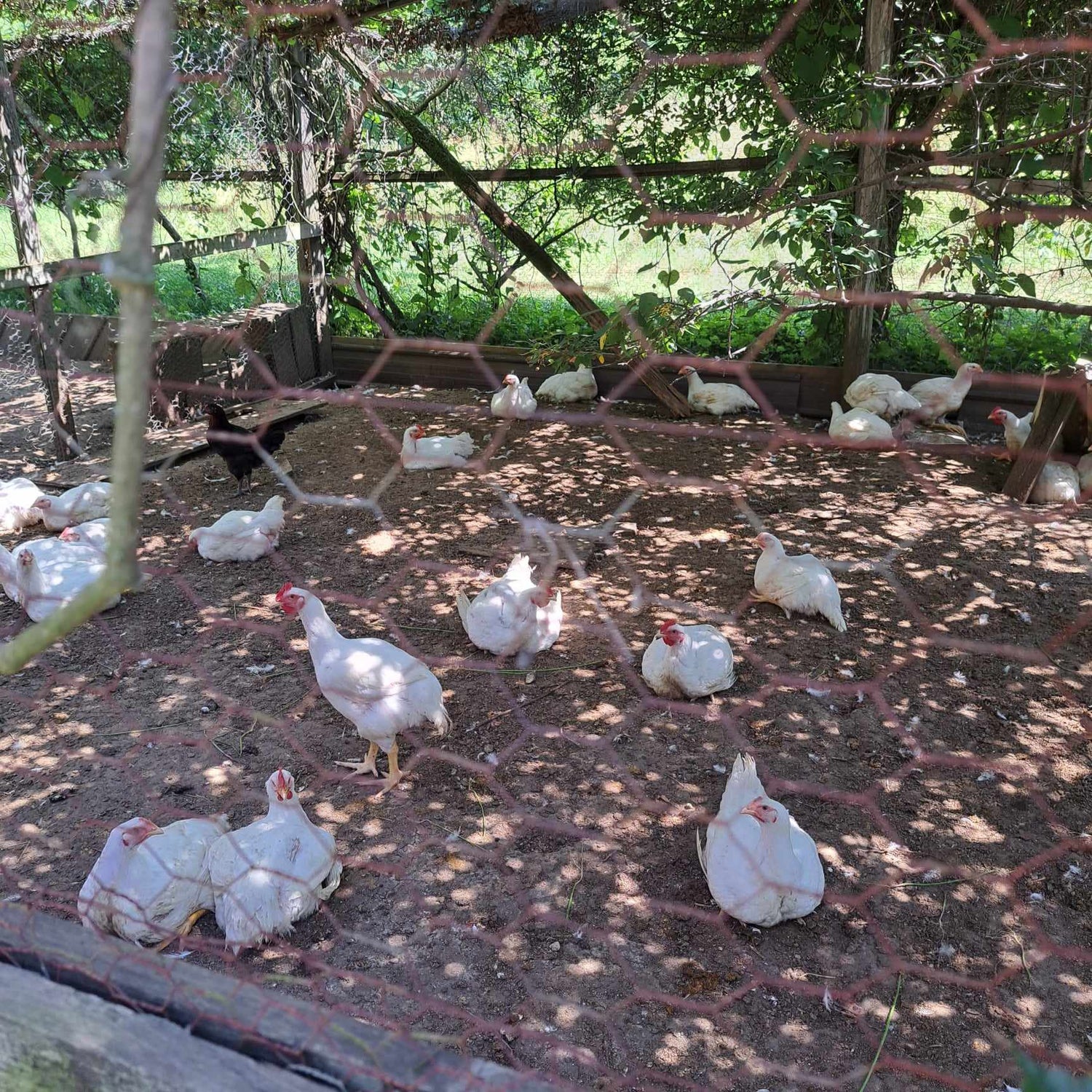
Then Chickens (2009)
After a few years of getting settled in and the property closer to the way we wanted it, we then turned our attention to the future. What kind of animals or other gardens do we want to have? So began the planning. We began construction of the first coop, and then the second. A little while later, the duck pen went up as well. We began to collect our own eggs, and raise our own meat chickens, further supplementing our groceries with fresh, home-raised proteins.
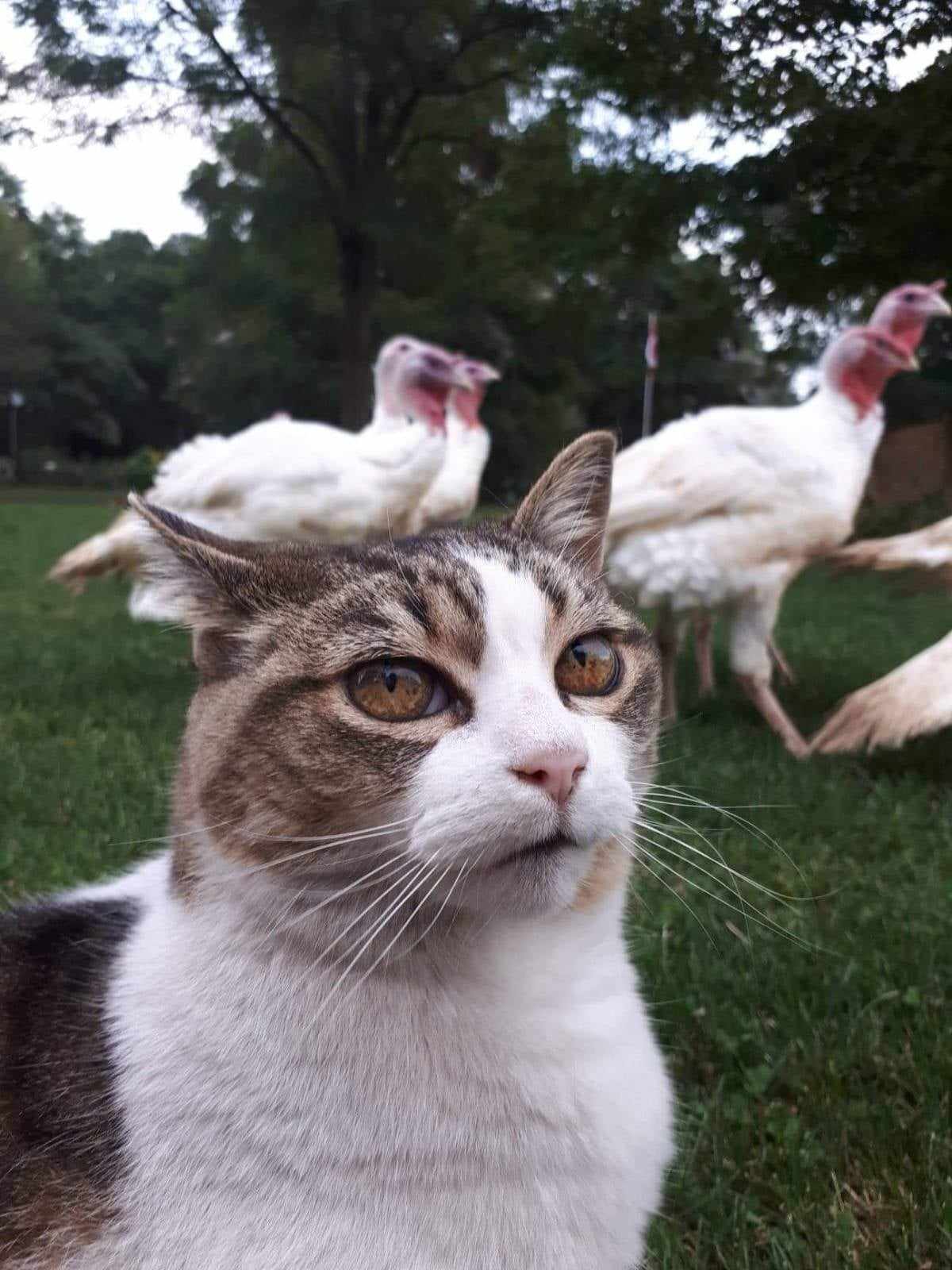
Turkeys (2014)
Because why stop at chickens? If we can raise chickens (and some ducks by this point), then why not cover all the poultry proteins and try some turkeys? Pictured to the left are meat turkeys from one year, being reluctantly watched over by one of the farm cats, but we did also have some heritage turkeys for a short time. We mainly raised turkeys large enough for our own family gatherings, and to give away to friends and family who had helped us during the year for their own holiday feasts.
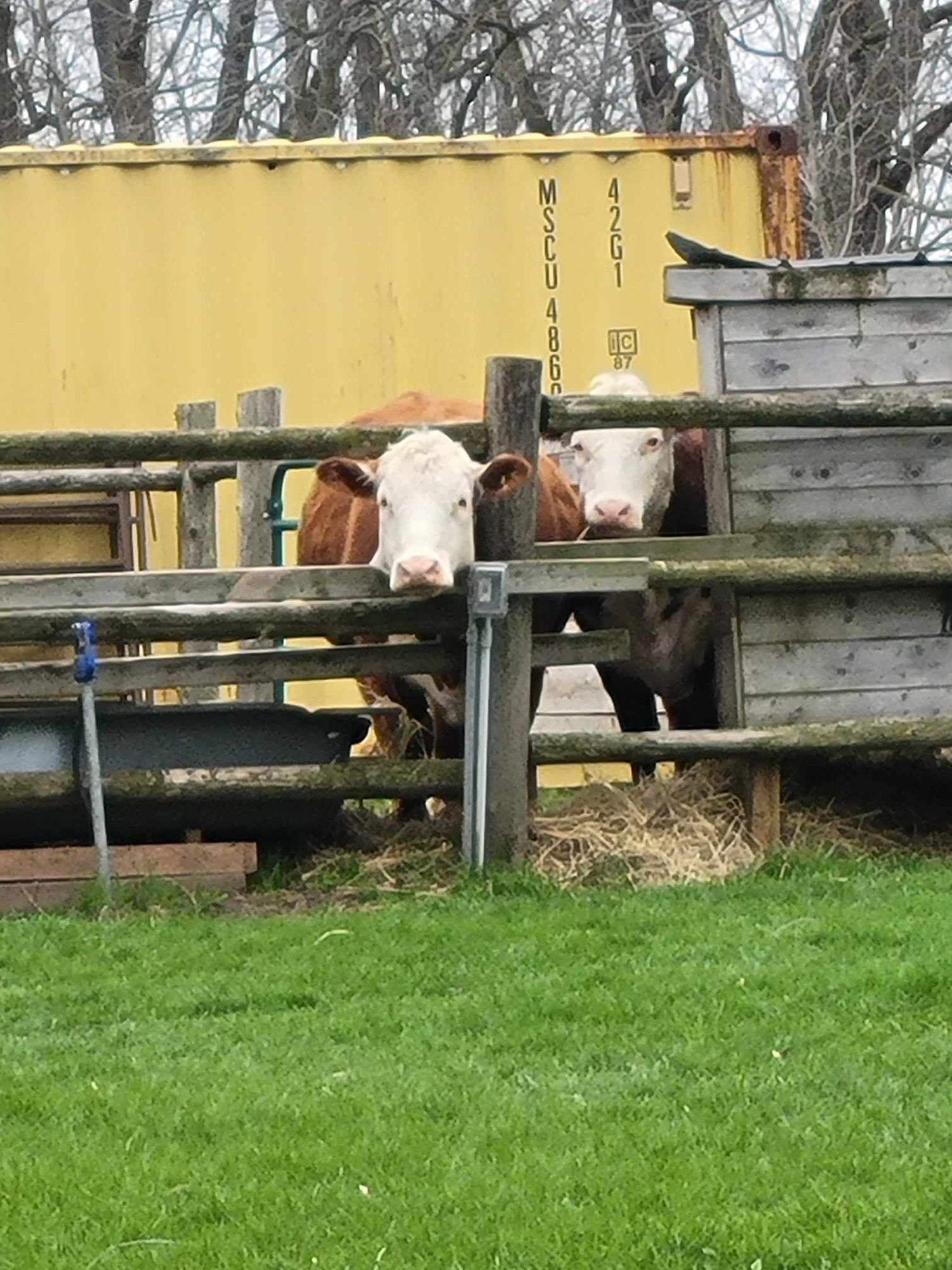
Cattle (2015)
It was actually a neighbour who helped get us into raising our own red meat. Our friend and neighbour down the road, who had been a tenant hay farmer on our land for several years before we moved there, also raised cattle, and was able to both mentor us and help us get our cattle to slaughter, giving us an invaluable opportunity to branch into this whole new territory in agriculture. We installed some electric fencing, built a small cattle pen, and began pasturing our own tasty beef.
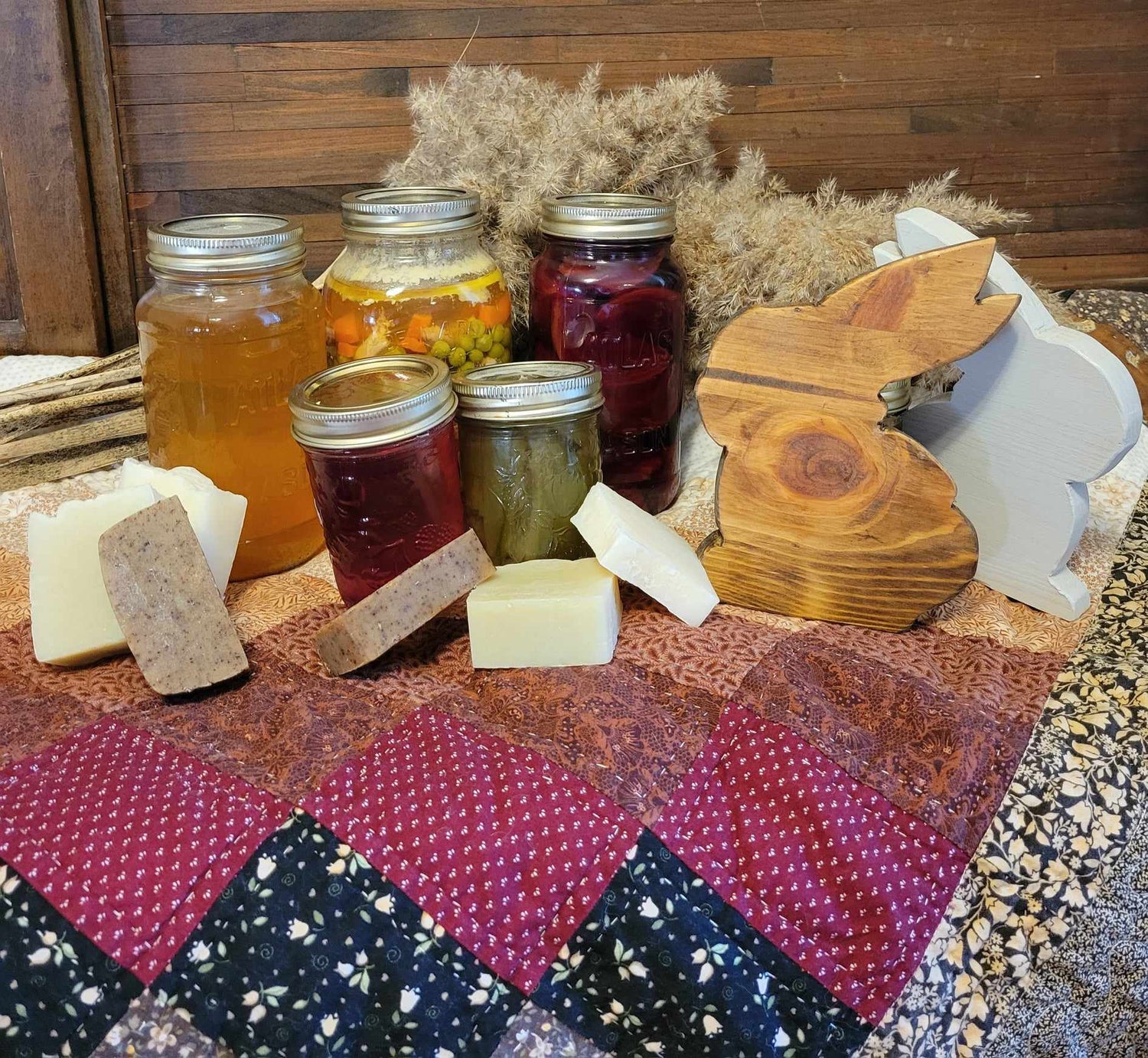
Pioneering Skills
Returning to our rural roots also brought the inspiration to return to some of the more traditional pioneering skills, especially those of quilting, soapmaking, and natural remedies/herbal medicine. We began to reuse and repurpose as much as we could, including every part of the animal we could legally get back from the butcher, and utilizing every part of that animal until there was nothing left. Stock from bones, tallow from lard fat, soap from the tallow. We also turned old, holey clothes into rags and quilts, and harvested plants for their medicine properties (like Jewelweed for poison ivy rashes)- knowledge we had gained from our foraging.
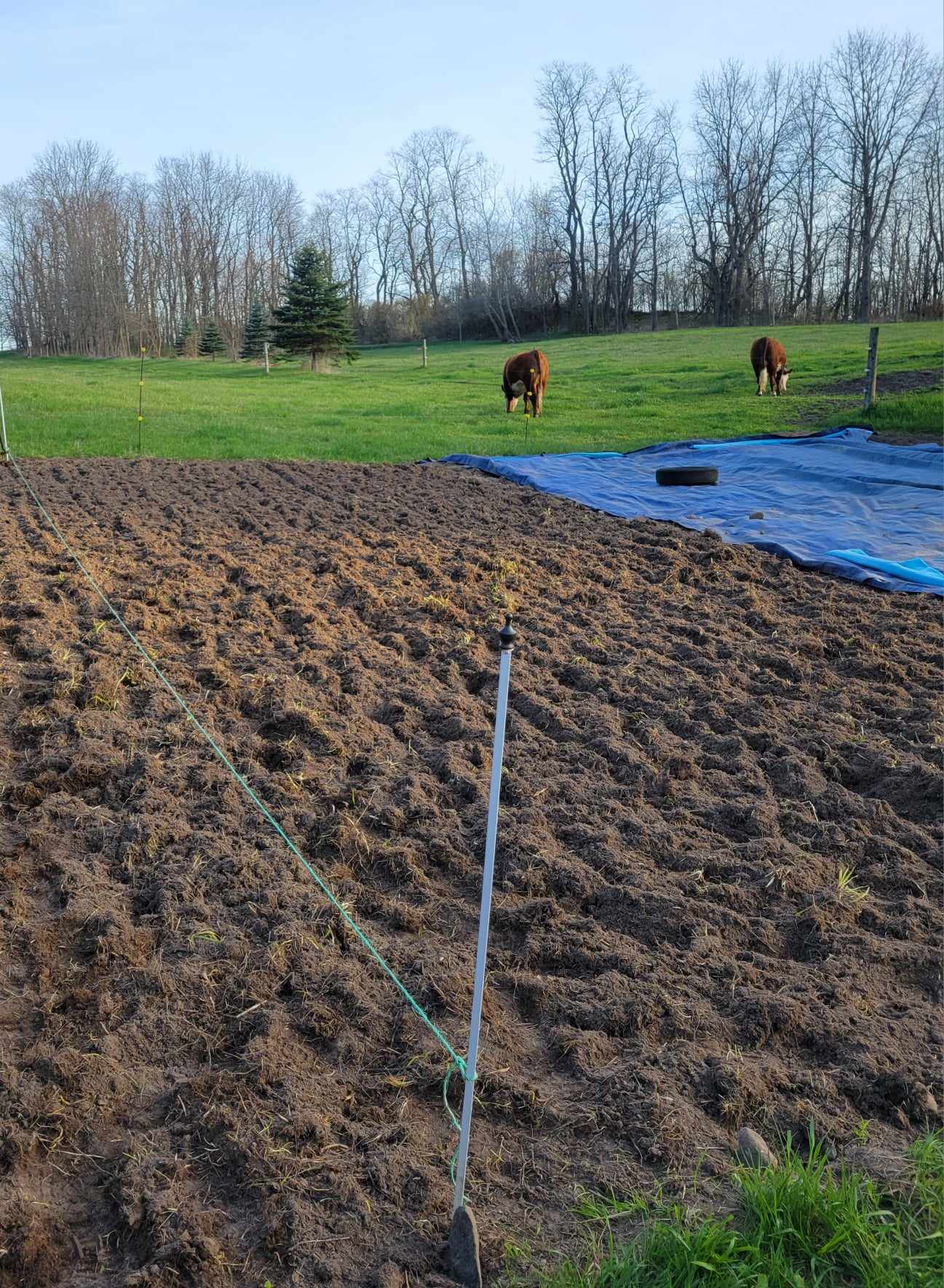
Garden Expansion (2024)
The desire to open up the farm to the public and supply our surrounding community with fresh farm produce and goods meant the need to create a second garden plot (pictured right). Our plan is to turn anything that doesn't find a home into a shelf-stable good, so there is very little waste. We plan to grow an abundance of tomatoes, cucumbers, brassicas (broccoli, cauliflower, etc), carrots, beets, etc, and we hope to continue to add onto this expansion as the years go by.
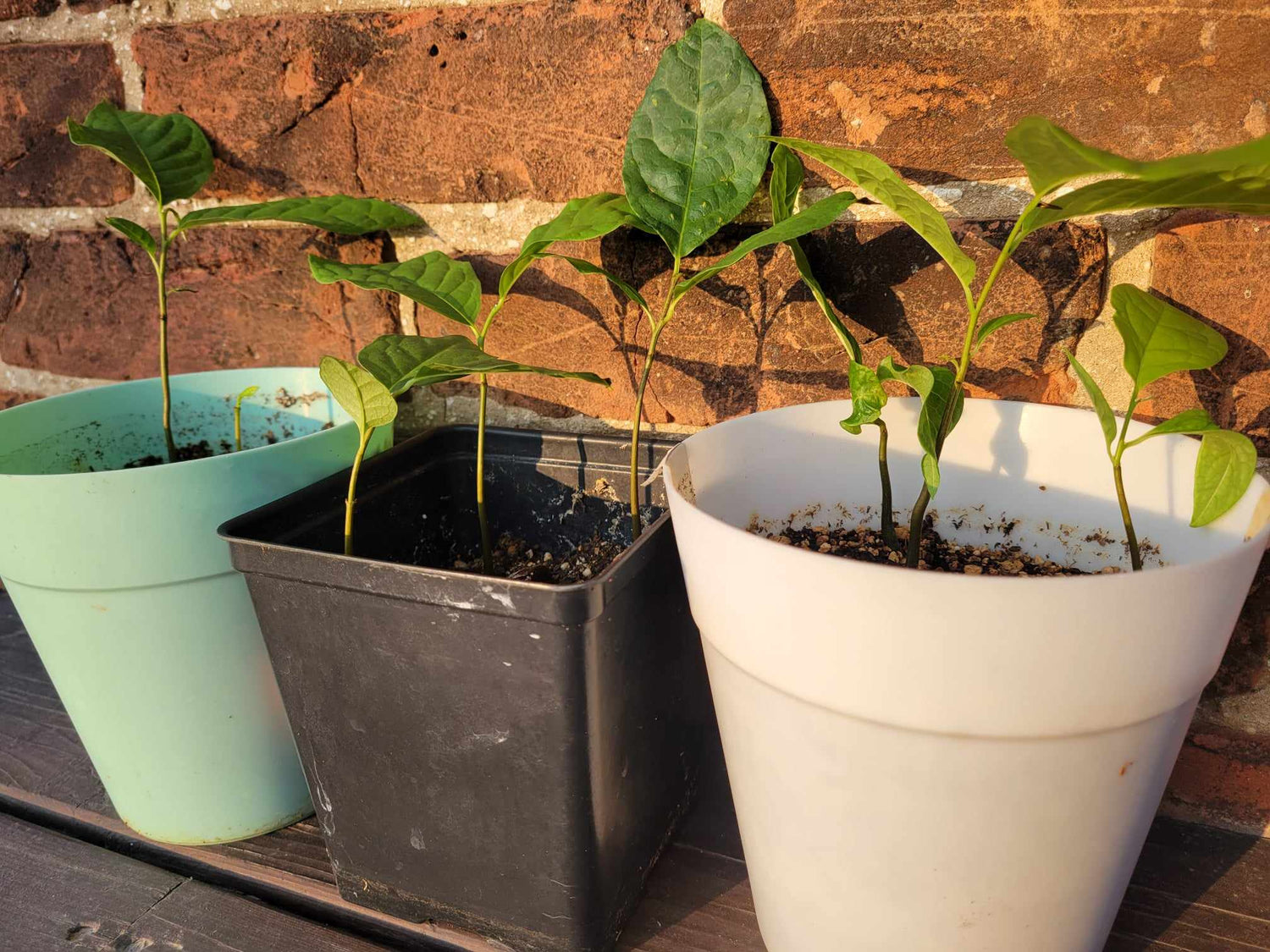
Food Forest Expansion
Along with the garden, we also decided to begin to expand the natural food forest that established itself in the knoll between the fields. We plan to slowly add more plants of the natural varieties that already grow there, including some young mulberry and paw paw trees, as well as encouraging more gooseberry bushes and raspberry canes. This food forest is already complemented nicely by the many haskap bushes we have put in at the bottom portion of the top field.
Wild PawPaw Seedlings
